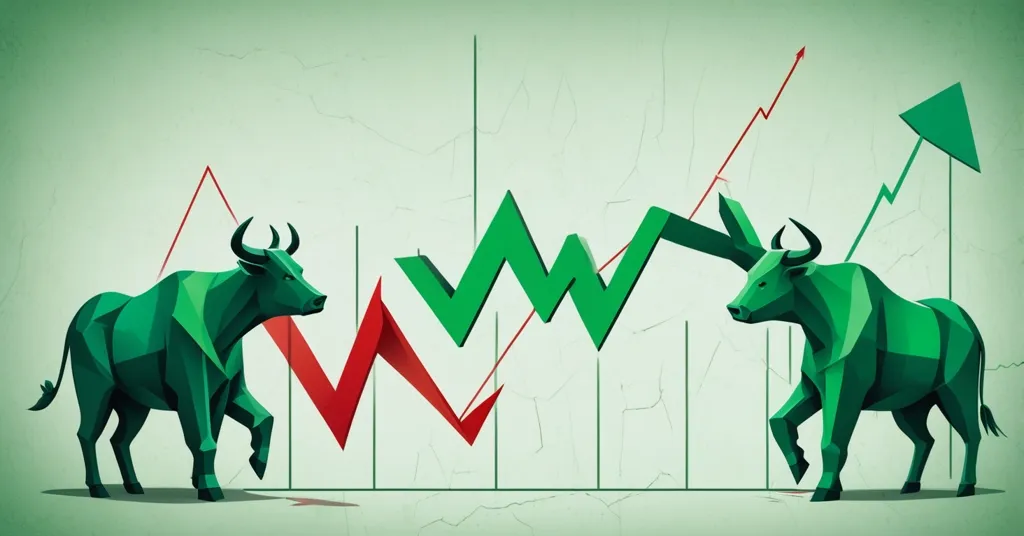Kaspa (KAS) Price Stagnant on August 17: Breakout or Breakdown Ahead?

Kaspa (KAS) Price Analysis: Sideways Stalemate on August 17—Breakout or Breakdown Looming?
Kaspa (KAS), a lesser-known altcoin with big ambitions, is stuck in a frustrating holding pattern as of August 17, trading at $0.0909 with barely a whisper of momentum. Traders are watching closely, waiting for a spark that could either launch a rally or trigger a sharp decline. Let’s dig into the numbers, dissect the tech, and weigh the risks to see if Kaspa is poised for a breakthrough or just another altcoin false dawn.
- Current Price: Kaspa trades at $0.0909, up a negligible 0.33% in the last 24 hours.
- Trading Range: Locked between support at $0.087–$0.090 and resistance at $0.10.
- Market Sentiment: Neutral-to-bearish indicators with potential for a violent move if key levels break.
What Is Kaspa? Unpacking the Tech Behind KAS
For those new to the crypto game, Kaspa is a Layer 1 blockchain built on a Proof-of-Work (PoW) consensus mechanism, echoing Bitcoin’s decentralized roots. But while Bitcoin stands as digital gold—a battle-tested store of value—Kaspa aspires to be more versatile, blending Bitcoin’s ironclad security with the programmability of Ethereum through potential smart contract capabilities. Its secret sauce lies in a structure called blockDAG (Directed Acyclic Graph), a departure from Bitcoin’s linear blockchain. Picture a multi-lane highway versus a single track: blockDAG allows transactions to be processed in parallel, aiming for faster speeds and better scalability without compromising decentralization. Kaspa also tackles a sneaky problem called Miner Extractable Value (MEV), where miners can manipulate transaction order for extra profit, undermining fairness. By resisting MEV exploits, Kaspa pitches itself as a fairer, more secure network—a kind of “digital silver” for everyday transactions alongside Bitcoin’s gold.
That’s the shiny brochure version. The reality? Tech alone doesn’t guarantee success, and Kaspa’s price chart right now looks more like a flatline than a rocket launch.
Price Analysis: Kaspa’s Stagnant Dance on August 17
Trading at $0.0909, Kaspa is caught in a suffocating range. Support levels between $0.087 and $0.090 act as a floor where buyers have stepped in to halt further drops, while resistance at $0.10 looms as a brick wall where sellers keep smacking it back down. Earlier this month, Kaspa teased a breakout, touching $0.117 before getting brutally rebuffed. Since then, neither bulls nor bears have mustered the conviction to take charge. A 24-hour price tick of 0.33% is laughably insignificant, and the 4-hour Relative Strength Index (RSI) sitting at 44 paints a picture of pure indecision. For clarity, RSI measures market momentum on a 0-100 scale: below 30 hints at oversold territory (a potential buy signal), above 70 flags overbought conditions (a sell signal), and 44 means the market is shrugging its shoulders, neither hot nor cold. For more detailed price insights for Kaspa on August 17, there are resources tracking daily movements.
Market Metrics: A Standoff With No Clear Winner
The numbers tell a story of gridlock. Trading volume is a modest 148.8 million, with a projected daily turnover around 1.5 billion—hardly the kind of activity that signals a stampede of adoption. Open Interest (OI), which tracks the total value of outstanding futures contracts, is stagnant at $465 million. Think of OI as pending bets at a casino: flat numbers mean traders aren’t rushing to place new wagers, content to sit on the sidelines. Net longs—bets that the price will rise—stand at $300 million, down slightly from last week, while net shorts—bets on a drop—hover at $294 million. It’s a near-dead heat, like two wary fighters sizing each other up, unwilling to swing first. You can explore real-time market data for Kaspa to see the latest RSI and OI trends.
This stalemate suggests pressure is building. When support or resistance finally cracks, the release could be explosive—up or down. But for now, it’s a snoozefest.
Price Scenarios: Bullish Break, Bearish Bust, or More Boredom?
So, what’s on the horizon for Kaspa? Let’s map out the possibilities, remembering that crypto markets love to defy logic with the subtlety of a sledgehammer.
- Bullish Outlook: If Kaspa can summon some grit and push past $0.095, it might challenge the $0.10 resistance. A decisive break there could spark a run toward $0.105, $0.110, or even revisit the $0.118 high from earlier this month. Whispers on platforms like Reddit and X point to potential catalysts—think listings on Tier 1 exchanges like Binance or Coinbase, which bring massive liquidity and exposure, or interest from institutional players like Grayscale. If altcoin sentiment heats up market-wide, Kaspa could catch a wave.
- Bearish Downside: Flip the coin, and a stumble below $0.087 support opens the door to pain. Bears could drag the price to $0.084 or as low as $0.080, levels likely to spook retail investors—often dubbed “weaker hands” for their tendency to panic-sell at the first sign of trouble. If Bitcoin sucks up market capital with rising dominance or macro factors like interest rate hikes dampen risk appetite, Kaspa’s downside risk grows.
- Neutral Drift: With trading volume anemic and no clear trigger in sight, Kaspa might just keep plodding sideways between $0.087 and $0.10. This soul-crushing chop is a trader’s worst nightmare, but it’s a plausible outcome if neither side blinks.
The Hard Truth: Why Isn’t Kaspa Taking Off?
Let’s cut the fluff and face facts. Kaspa’s tech is impressive—PoW security, blockDAG scalability, MEV resistance—it’s a solid pitch. Some enthusiasts even call it “the most groundbreaking crypto since Bitcoin and Ethereum.” So why isn’t the market throwing money at it? First, the crypto space is drowning in distractions. Meme coins—yes, I’m side-eyeing every half-baked “fartcoin” of the week—suck up attention and capital with zero substance. Kaspa, meanwhile, lacks the mainstream buzz of competitors like Solana or Avalanche, which boast flashier marketing and thriving developer ecosystems. Community activity on X and Reddit shows passion but not scale, and developer commits on GitHub are steady, not staggering. Without killer apps, major partnerships, or a viral narrative, adoption remains a brutal uphill slog. Dive into community discussions on Kaspa to gauge firsthand opinions from enthusiasts and skeptics alike.
Then there’s the long-term skepticism. Forecasts from various platforms throw a dark shadow, predicting a potential plunge to $0.0629 by late August 2025—a stomach-churning -30.3% from current levels. Their sentiment analysis is bleak, with 72% of indicators urging traders to “sell and lock in gains.” That’s a stark contrast to short-term breakout hopes, underlining the rollercoaster nature of altcoins: wild hype one day, crushing despair the next. But let’s be real—price predictions, especially hyper-specific ones tied to exact dates, are often pure hogwash. Whether it’s a bullish pipe dream of $1 KAS from some clickbait YouTuber or a bearish crash to $0.06, these are educated guesses at best, gambling on a market swayed by everything from regulatory mood swings to a billionaire’s late-night tweet. For more on recent Kaspa price forecasts and market sentiment, there are detailed updates available.
Kaspa’s Place in a Bitcoin-Dominated World
As someone with a Bitcoin maximalist lean, I view altcoins through a skeptical lens. Bitcoin is the ultimate middle finger to centralized finance—a decentralized, censorship-resistant bastion of freedom. Kaspa’s PoW foundation aligns with that ethos, and its blockDAG innovation ties into the “effective accelerationism” drive to disrupt broken systems at breakneck speed. If it scales, Kaspa could challenge legacy payment networks with secure, rapid transactions. But its smart contract ambitions raise a red flag: does chasing Ethereum’s turf dilute its focus? Bitcoin didn’t need fancy features to become digital gold; perhaps Kaspa’s strength lies in being a lean, transactional layer, not a jack-of-all-trades. For a deeper look into its core technology and features, comprehensive resources are accessible.
Broader context matters too. Kaspa isn’t immune to Bitcoin’s gravitational pull—when BTC stumbles, altcoins bleed. Macro headwinds like rising interest rates or regulatory crackdowns (think SEC labeling altcoins as securities) could hammer its prospects. Conversely, an altcoin season—where smaller coins outshine Bitcoin—could catapult Kaspa if a major catalyst like a Tier 1 listing materializes. It’s a high-stakes gamble in a crowded field. Curious about how others view blockDAG technology in Kaspa? There are platforms hosting open discussions on the topic.
Key Questions and Takeaways on Kaspa (KAS)
- What is Kaspa’s current price and trading range as of August 17?
Kaspa trades at $0.0909, trapped between support at $0.087–$0.090 and resistance at $0.10, with no clear direction yet. - What makes Kaspa’s blockchain technology stand out?
Its blockDAG structure processes transactions in parallel for speed and scalability, while MEV resistance and PoW security offer a unique blend of Bitcoin’s robustness and added functionality. - What do market indicators tell us about Kaspa’s sentiment?
A 4-hour RSI of 44 suggests a neutral-to-bearish mood, and flat Open Interest at $465 million with balanced net longs/shorts shows traders are playing it safe. - What are the potential short-term price moves for Kaspa?
Breaking above $0.10 could target $0.105–$0.118; slipping below $0.087 might test $0.084–$0.080; or low volume could keep it drifting sideways. - Why isn’t Kaspa seeing more momentum despite its tech?
Distraction by meme coins, limited mainstream visibility, and slower adoption compared to rivals like Solana are likely culprits. - Are long-term price predictions for Kaspa reliable?
Hardly—forecasts like a drop to $0.0629 by 2025 are speculative at best, as crypto markets are notoriously unpredictable. - How does Kaspa fit into a Bitcoin-centric perspective?
Its PoW roots resonate with Bitcoin’s decentralized ethos, but its broader ambitions raise questions about whether it should stay focused as a transactional layer.
Here’s the bottom line, straight from the trenches:
Bottom line: Kaspa range is clear. $0.087 is support, $0.10 is resistance. Until one of those levels breaks, expect more sideways chop. But once it does, the next move could be fast.
Kaspa’s tech holds real promise, with blockDAG and MEV resistance offering a fresh spin on Layer 1 challenges. Yet, it’s mired in obstacles—adoption lags, visibility is low, and market sentiment is a coin toss. For Bitcoin purists, Kaspa’s PoW DNA earns respect, but altcoins must deliver beyond hype to justify their existence. Can it carve out a lasting niche in a cutthroat market? That’s the question worth millions. Keep your sights on those key levels—when the deadlock shatters, it’ll be a wild ride, for better or worse. For broader community insights, check out discussions on Kaspa’s background and unique appeal.



